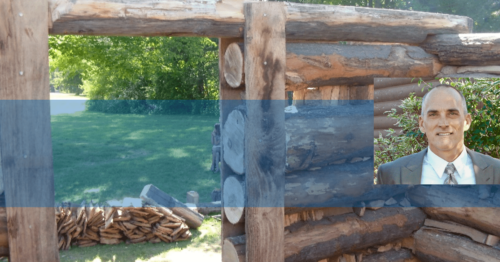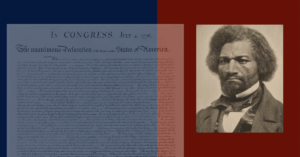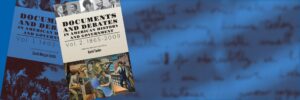
Engaging Students in America’s Past and Future
Angus McDougall, a teacher from Hiram, Ohio, enrolled in the Master of Arts in American History and Government (MAHG) program for many of the same reasons other teachers do. He appreciated its schedule, planned for the convenience of working teachers. Comparing it to American history programs at other universities, he saw that MAHG, unlike the others, covers every period of US history. It draws faculty experts from universities across the country in order to offer this comprehensive curriculum. It also covers American government and political institutions. Class sizes are kept small, allowing participants to engage in discussion of the primary documents they study.
McDougall decided to try a first intensive summer residential course. Yet he felt conflicted. The course would span the Fourth of July holiday.
“That’s a holy day for me,” McDougall explained. Each year he devotes a private hour to reading the entire Declaration, including the list of signers. “Then I spend the rest of my day with my family. In our small town of Hiram, Ohio we have a yearly Fourth of July softball game, with old-timers playing against young-timers. People who grew up here return to play, even from out of state. I missed this day for the first time in my life because I was at MAHG.”
That year, before a dinner of traditional cookout food for the Fourth, Peter Schramm (then Ashbrook Director) asked volunteers to stand and read the Declaration of Independence. Each MAHG student read several sentences, the final student reading the list of delegates. “I couldn’t hold it together. I had to walk out and call my brother to tell him about it. I knew that day that the MAHG program was something special and I was staying.”
One of McDougall’s first courses was “The Early Republic,” team-taught by historian and Jefferson scholar Rob McDonald (of the US Military Academy at West Point) and Steve Knott (a political scientist at the US Naval Academy who writes about Hamilton). Their contrasting perspectives led to vigorous classroom debates. “Now I try to teach my own classes that way,” McDougall said. “I expect passion and engagement.”
Dropping textbooks, and focusing on primary documents, helps high school students better understand the past. But to really engage that history, McDougall finds, teenagers need concrete experiences. That’s why he and colleagues at Crestwood High School invented a “school within the school”: The American Experiential Academy.
Read more about the academy and how it evolved from McDougall’s Master’s thesis work into a study of Ohio’s past and future.



